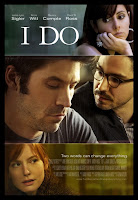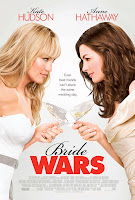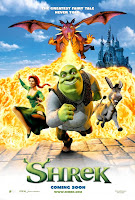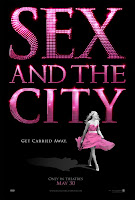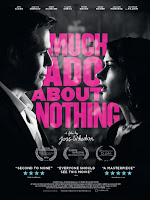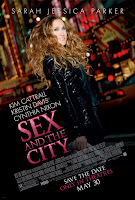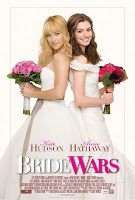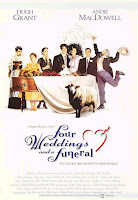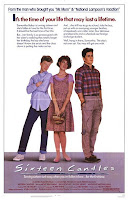Outstanding Comedy Series
30 Rock (NBC): “Goodbye Forever, 30 Rock“ by Max Thornton
The Big Bang Theory (CBS): “The Evolution of The Big Bang Theory“ by Rachel Redfern
Girls (HBO): “Girls and Sex and the City Both Handle Abortion With Humor” by Megan Kearns
Louie (FX): “Listening and the Art of Good Storytelling in Louis C.K.’s Louie“ by Leigh Kolb
Modern Family (ABC): “‘Pregnancy Brain’ in Sitcoms” by Lady T
Veep (HBO): “Political Humor and Humanity in HBO’s Veep“ by Rachel Redfern
Outstanding Lead Actor in a Comedy Series
Jason Bateman, Arrested Development: “Arrested Development‘s Mancession: Economic and Gender Meltdowns in Season 4″ by Leigh Kolb
Jim Parsons, The Big Bang Theory: “Big Bang Bust” by Melissa McEwan
Matt LeBlanc, Episodes
Don Cheadle, House of Lies
Louis C.K., Louie
Alec Baldwin, 30 Rock: “The Casual Feminism of 30 Rock“ by Peggy Cooke
Outstanding Lead Actress in a Comedy Series
Laura Dern, Enlightened
Lena Dunham, Girls: “Let’s All Take a Deep Breath and Calm the Fuck Down About Lena Dunham” by Stephanie Rogers
Edie Falco, Nurse Jackie: “Nurse Jackie as Feminist Id?” by Natalie Wilson
Amy Poehler, Parks and Recreation: “Why We Need Leslie Knope and What Her Election on Parks and Rec Means for Women and Girls” by Megan Kearns
Tina Fey, 30 Rock: “Liz Lemon: The Every Woman of Prime Time” by Lisa Mathews
Julia Louis-Dreyfus, Veep
Outstanding Supporting Actor in a Comedy Series
Adam Driver, Girls
Jesse Tyler Ferguson, Modern Family
Ed O’Neill, Modern Family
Ty Burrell, Modern Family
Bill Hader, Saturday Night Live
Tony Hale, Veep
Outstanding Supporting Actress in a Comedy Series
Mayim Bialik, The Big Bang Theory
Jane Lynch, Glee: “Glee!” by Cali Loria
Sofia Vergara, Modern Family
Julie Bowen, Modern Family
Merritt Wever, Nurse Jackie
Jane Krakowski, 30 Rock: “Jane Krakowski and the Dedicated Ignorance of Jenna Maroney” by Kyle Sanders
Anna Chlumsky, Veep
Outstanding Drama Series
Breaking Bad (AMC): “‘Yo Bitch’: The Complicated Feminism of Breaking Bad“ by Leigh Kolb
Downton Abbey (PBS): “A Gilded Cage: A Feminist Critique of the Downton Abbey Christmas Special” by Amanda Civitello
Game of Thrones (HBO): “Gratuitous Nudity and Complex Female Characters in Game of Thrones“ by Lady T
Homeland (Showtime): “Homeland‘s Carrie Mathison: A Pulsing Beat of Jazz and ‘Crazy Genius” by Leigh Kolb
House of Cards (Netflix): “The Complex, Unlikable Women of House of Cards: Daddy Issues, Menopause and Female Power” by Leigh Kolb
Mad Men (AMC): “Mad Men: Gender, Race, and the Death Knell of White Patriarchy” by Leigh Kolb
Outstanding Lead Actor in a Drama Series
Bryan Cranston, Breaking Bad: “Seeking the Alpha in Breaking Bad and Sons of Anarchy“ by Rachel Redfern
Hugh Bonneville, Downton Abbey
Damian Lewis, Homeland
Kevin Spacey, House of Cards
Jon Hamm, Mad Men: “Hey, Brian McGreevy: Vampire Pam Beats Don Draper Any Day” by Tami Winfrey Harris
Jeff Daniels, The Newsroom: “The Newsroom: Misogyny 2.0″ by Leigh Kolb
Outstanding Lead Actress in a Drama Series
Vera Farmiga, Bates Motel
Michelle Dockery, Downton Abbey
Claire Danes, Homeland: “Homeland‘s Carrie Mathison” by Cali Loria
Robin Wright, House of Cards: “Claire Underwood: The Queen Bee on House of Cards“ by
Amanda Rodriguez
Elisabeth Moss, Mad Men: “Mad Men and the Role of Nostalgia” by Amber Leab
Connie Britton, Nashville: “Quote of the Day: Screenwriter/Director Callie Khouri Weighs In on How TV Is Friendlier to Women” by Leigh Kolb
Kerry Washington, Scandal: “Mammy, Sapphire, or Jezebel, Olivia Pope Is Not: A Review of Scandal“ by Atima Omara-Alwala
Outstanding Supporting Actor in a Drama Series
Bobby Cannavale, Boardwalk Empire: “Boardwalk Empire: Margaret Thompson, Margaret Sanger, and the Cultural Commentary of Historical Fiction” by Leigh Kolb
Jonathan Banks, Breaking Bad
Aaron Paul, Breaking Bad
Jim Carter, Downton Abbey
Peter Dinklage, Game of Thrones: “The Occasional Purposeful Nudity on Game of Thrones“ by Lady T
Mandy Patinkin, Homeland
Outstanding Supporting Actress in a Drama Series
Anna Gunn, Breaking Bad
Maggie Smith, Downton Abbey
Emilia Clarke, Game of Thrones: “The Mother of Dragons is Taking Down the Patriarchy” by Megan Kearns
Christine Baranski, The Good Wife: “So, Is There Racial Bias on The Good Wife?” by Melanie Wanga
Morena Baccarin, Homeland
Christina Hendricks, Mad Men: “Is Mad Men the Most Feminist Show on TV?” by Megan Kearns
Outstanding Miniseries or Movie
American Horror Story: Asylum (FX): “‘That Crazy Bitch’: Women and Mental Illness Tropes in Horror” by Megan Kearns
Behind the Candelabra (HBO)
The Bible (History)
Phil Spector (HBO)
Political Animals (USA)
Top of the Lake (Sundance Channel): “Not Peggy Olson: Rape Culture in Top of the Lake“ by Lauren C. Byrd
Outstanding Lead Actor in a Miniseries or a Movie
Michael Douglas, Behind the Candelabra
Matt Damon, Behind the Candelabra
Toby Jones, The Girl: “Too Many Hitchcocks” by Robin Hitchcock
Benedict Cumberbatch, Parade’s End
Al Pacino, Phil Spector
Outstanding Lead Actress in a Miniseries or a Movie
Jessica Lange, American Horror Story: Asylum
Laura Linney, The Big C: Hereafter
Helen Mirren, Phil Spector
Sigourney Weaver, Political Animals
Elisabeth Moss, Top of the Lake
Outstanding Supporting Actor in a Miniseries or a Movie
James Cromwell, American Horror Story: Asylum
Zachary Quinto, American Horror Story: Asylum
Scott Bakula, Behind the Candelabra
John Benjamin Hickey, The Big C: Hereafter
Peter Mullan, Top of the Lake
Outstanding Supporting Actress in a Miniseries or a Movie
Sarah Paulson, American Horror Story: Asylum
Imelda Staunton, The Girl
Ellen Burstyn, Political Animals
Charlotte Rampling, Restless
Alfre Woodard, Steel Magnolias
Outstanding Variety Series
The Colbert Report (Comedy Central)
The Daily Show with Jon Stewart (Comedy Central): “YouTube Break: Too Many Dicks on The Daily Show“ by Amber Leab
Jimmy Kimmel Live (ABC)
Late Night With Jimmy Fallon (NBC)
Real Time with Bill Maher (HBO)
Saturday Night Live (NBC)
Outstanding Host for a Reality or Reality-Competition Program
Ryan Seacrest, American Idol
Betty White, Betty White’s Off Their Rockers
Tom Bergeron, Dancing with the Stars
Heidi Klum and Tim Gunn, Project Runway
Cat Deeley, So You Think You Can Dance
Anthony Bourdain, The Taste
Outstanding Reality-Competition Program
The Amazing Race (CBS)
Dancing with the Stars (ABC)
Project Runway (Lifetime)
So You Think You Can Dance (Fox)
Top Chef (Bravo)
The Voice (NBC)
Outstanding Reality Program
Antiques Roadshow (PBS)
Deadliest Catch (Discovery Channel)
Diners, Drive-Ins and Dives (Food Network)
MythBusters (Discovery Channel)
Shark Tank (ABC)
Undercover Boss (CBS)
Outstanding Animated Program
Bob’s Burgers (Fox)
Kung Fu Panda: Legends of Awesomeness (Nickelodeon)
Regular Show (Cartoon Network)
The Simpsons: “Bart Simpson’s Feminine Side” by Lady T
South Park
Outstanding Guest Actor in a Comedy Series
Bob Newhart, The Big Bang Theory
Nathan Lane, Modern Family
Bobby Cannavale, Nurse Jackie
Louis C.K., Saturday Night Live
Justin Timberlake, Saturday Night Live
Will Forte, 30 Rock
Outstanding Guest Actress in a Comedy Series
Molly Shannon, Enlightened
Dot-Marie Jones, Glee
Melissa Leo, Louie
Melissa McCarthy, Saturday Night Live
Kristen Wiig, Saturday Night Live
Elaine Stritch, 30 Rock
Outstanding Guest Actor in a Drama Series
Nathan Lane, The Good Wife
Michael J. Fox, The Good Wife
Rupert Friend, Homeland
Robert Morse, Mad Men
Harry Hamlin, Mad Men
Dan Bucatinsky, Scandal
Outstanding Guest Actress in a Drama Series
Margo Martindale, The Americans
Diana Rigg, Game of Thrones
Carrie Preston, The Good Wife
Linda Cardellini, Mad Men
Jane Fonda, The Newsroom
Joan Cusack, Shameless



































































